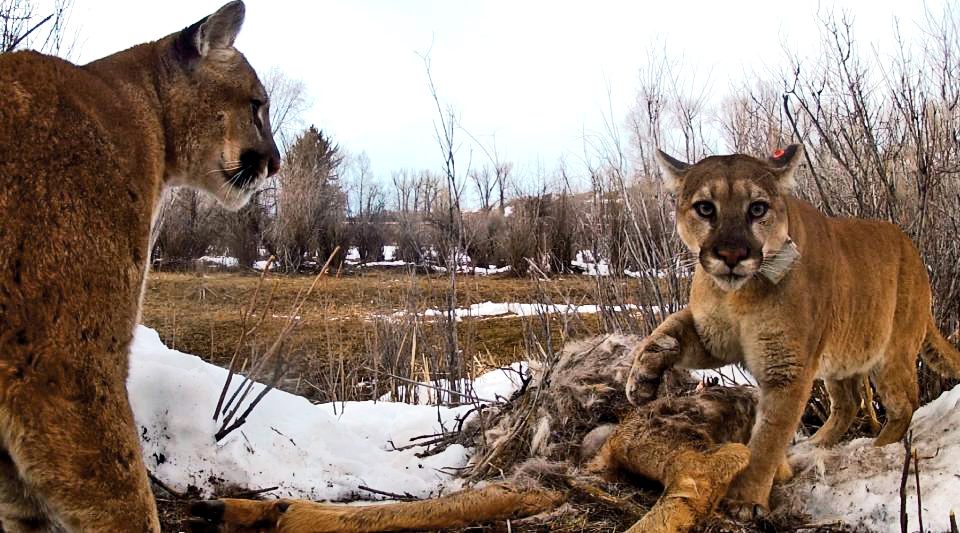Mountain Lions Are Way More Social Than We Thought
The big cats have been spotted sharing meals.

Scientists have long thought that mountain lions are majestic loners—only spending time with their fellow big cats when raising young or breeding, and otherwise roaming around their vast ranges by themselves. So researchers were surprised when cameras trained on animal carcasses spotted cats sharing meals. It turns out that the solitary pumas are actually somewhat social.
A team from the University of California, Davis, the conservation group Panthera, and the American Museum of Natural History used data from mountain lions wearing GPS collars and motion-activated cameras in Wyoming to learn more about cat interactions. They found that every single mountain lion they tracked ended up feeding from a carcass at the same time as another cat, and some were repeat dining partners.
They also discovered that the cougars had a hierarchy, with male cats ruling over a territory, and other cats forming a network within that region. Dominant male cats also got the best deal—when other cats tolerated their presence, they were able to feast on carcasses they didn’t have to hunt down themselves. This, the researchers write in their report, suggests “males might be cheating in a cooperative system” based on reciprocating tolerance.
And when it comes to cougars, social doesn’t mean friendly. In videos, included with the report in Science Advances, the cats come off as confrontational at times.
While it’s nice that these cats apparently get to hang out with others on occasion, the fact that they’re social could change how they’re protected. If a male cat is killed by a trophy hunter, the social network could be affected and hurt other mountain lions. And if mountain lions socialize, then biologists may need to reconsider what they think they know about how other solitary cats, like snow leopards, interact. The world’s big cats could have a hidden life.






















Follow us on Twitter to get the latest on the world's hidden wonders.
Like us on Facebook to get the latest on the world's hidden wonders.
Follow us on Twitter Like us on Facebook